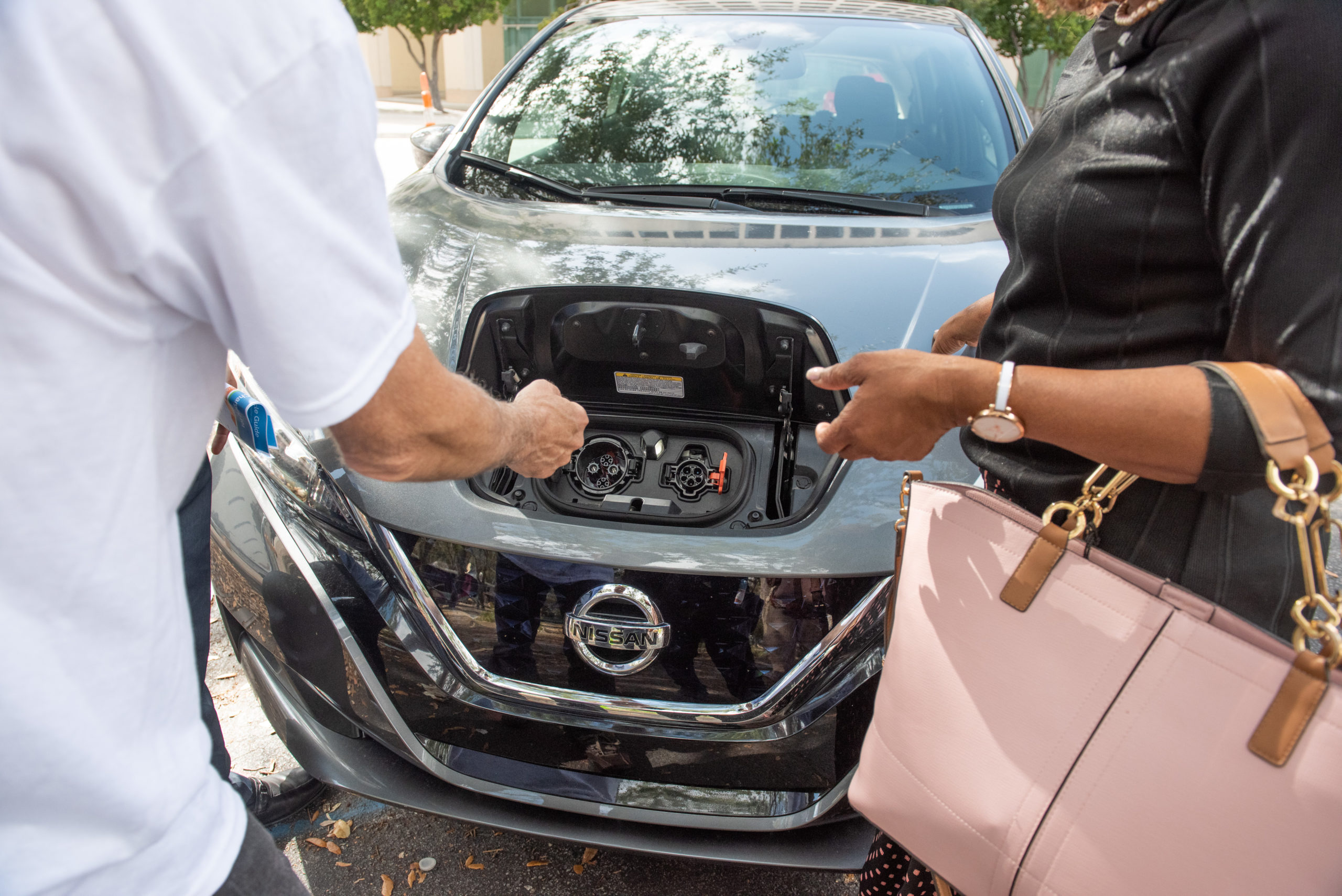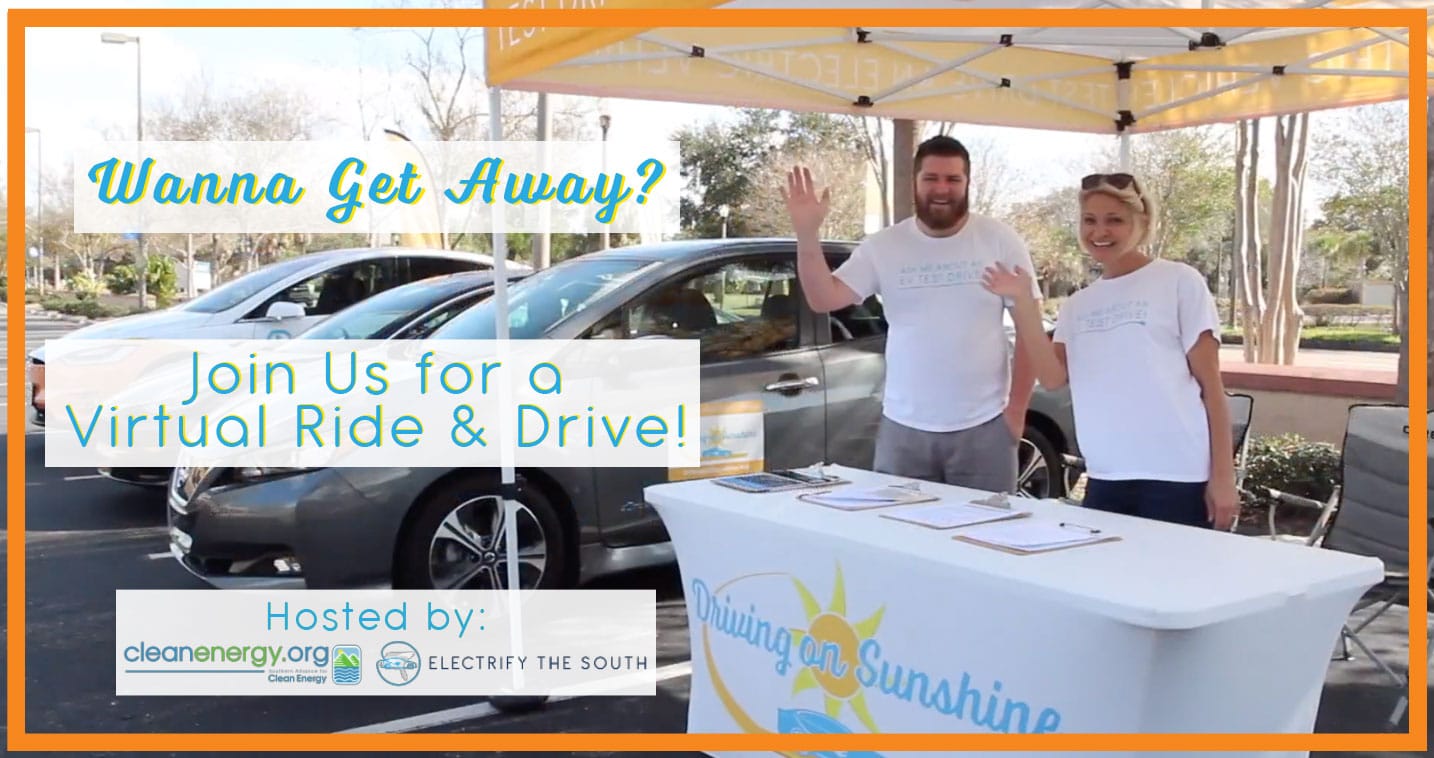Local municipalities around the country are recognizing the advantages of electric vehicles (EVs) for their fleets and many have started transitioning them. This past year, SACE has been successfully engaging and empowering a growing list of more than 20 cities and counties in Florida with our electric transportation policy solutions toolkit. At the one-year mark, the toolkit has been updated to reflect lessons learned and highlight new successes.
Dory Larsen | May 27, 2020 | Clean Transportation, Electric VehiclesIn the summer of 2019, Electrify the South (the electric transportation program of Southern Alliance for Clean Energy) launched a policy guide, or toolkit, designed to accelerate the adoption of electric transportation through a comprehensive suite of policy options that local governments could enact. Since last summer, we have conducted direct outreach to engage decision-makers on how to use the toolkit and implement the recommended strategies. Over the course of the year, SACE has successfully engaged and empowered a growing list of more than 20 cities and counties. As part of our campaign goal to protect our coast by encouraging more people and cities to drive electric, we’re encouraged to see local municipalities around the country recognizing the advantages of electric vehicles (EVs) for their fleets. The Protect Our Coast: Drive Electric initiative began in Florida and expanded up the coastline, but this toolkit is not limited to coastal cities.

Reflect and Refresh with Updates at the One-Year Mark
At our one-year anniversary, we have updated the Toolkit to share success stories and to reflect lessons learned and themes that have emerged:
Coordination
Transitioning to an electrified transportation system requires coordination across a multitude of departments and a good team composed of leaders from all the departments that will impact – and be impacted- by transportation electrification (TE). This should include a strong Communications team to really tell the story well to all stakeholders! We updated the Toolkit by expanding the “Create an Overarching Transportation Electrification Plan” section to include coordination across a multitude of departments.
Economic Development
There are numerous economic development benefits of TE for local economies. We updated the Toolkit accordingly by renaming the “Incentive Electric Driving” section to “Promote Economic Development by Investing in Electric Transportation” and adding specific examples of economic development opportunities to capture TE’s broader benefits to the community at large.

Equity and Access
Frontline communities face disproportionate health disparities from transportation pollution. Solutions to reduce disparities should be prioritized. Efforts this past year we have reinforced how critical it is to include equity in all aspects of municipal TE efforts.
Ongoing Education
Providing ongoing TE education across the entire staff is critical to ensure institution-wide understanding grows as EV technology improves. For example, the range of EVs a few years ago was under 100 miles. If employees aren’t updating their knowledge they may be misinformed about the current 200+ mile range average. SACE’s Driving on Sunshine (DOS) EV Roadshow has allowed us to partner with municipalities for hands-on learning opportunities for municipal staff. We have updated our Toolkit’s “Education and Outreach” section to include Partner for a DOS Event, both in-person when it is safe to do so and via webinars for virtual drive events in the meantime.

Existing Priorities
There is value in weaving TE plans into other municipal priorities to build capacity. For example, including EV charging hubs in multi-unit or affordable housing can be a double benefit of lowering both housing and transportation costs for community members. This is discussed in the Toolkits’ newly-expanded “Economic Development” section.
Premise Stays the Same
While the EV Policy Toolkit has clearly had some important updates, it remains based on effective EV policies from around the country, with links to real-world examples. The current Toolkit is made up of 36 policy tools and is formatted so that decision-makers can simply click on a link and implement an idea. The new updates include additional examples of cities that are leading the way. For example, the City of Raleigh, NC recently published its Transportation Electrification Plan.
Spotlighting Our Successes
Two prime examples of our success over the past year show how the toolkit has helped cities and counties reach their EV goals:
Hillsborough County, Florida
On February 13th, Hillsborough County hosted the Love Hillsborough – Sustain Your Community event. Approximately 500 people turned out to learn how to live, work, and play more sustainably. Sheila McNamara, Hillsborough County’s sustainability manager, said partnering with SACE’s DOS program was a huge draw, with people excited to learn about EVs and the opportunity to Test Drive A Tesla. Many people have still never driven – or even ridden – in an EV, and are therefore apprehensive about the technology. Programs like DOS offer a wonderful opportunity to engage citizens in a fun, non-pressure environment that stirs conversation and further interest. Hillsborough is now considering adding additional EV infrastructure, identifying charging deserts in the County, increasing fleet EVs, and working with groups to further identify collaborations and ways to expand the adoption of cleaner technology.
Winter Park, Florida
Thanks to the DOS visit to the City of the Winter Park, city commissioners, and city staff, including the City’s fleet manager, had an opportunity to get an up-close look at EVs. The event took place prior to a city commission work session where staff reviewed a new EV readiness policy for the city that includes requirements for EV readiness in new construction (residential and commercial). At the time, the City only had one Ford Focus EV. This event gave Building and Permitting staff (building inspectors) the opportunity to “try-out” different vehicles and helped the department decide to purchase 5 Nissan Leafs as a part of their vehicle replacement plan for FY 2020.
Continuing the Work
There is still much work to be done to ensure all communities are aware of the benefits of transitioning to electrification. The work of SACE continues during this time of social-distancing through online ride and drives and webinars. If you are interested in working with us to help electrification efforts in your community please reach out to Dory at [email protected]. Learn more about our work at electrifythesouth.org.